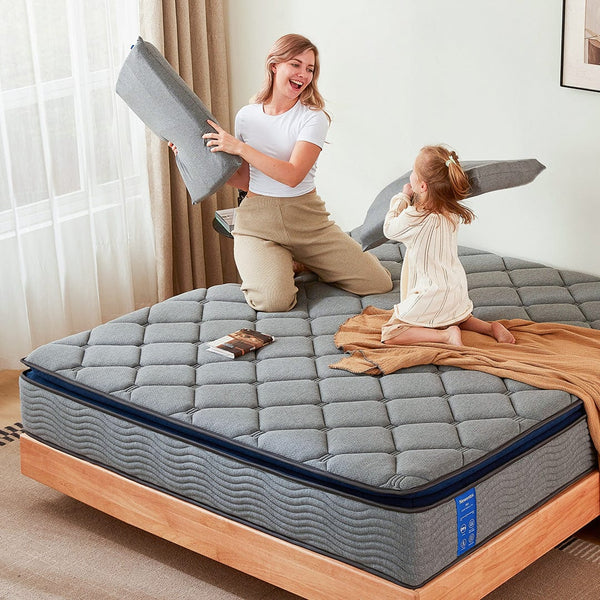Sleeping comfortably in your preferred position is essential if you want to get quality sleep. Whichever position you sleep in, it is important that your spine is properly aligned and pressure points are cushioned. Which mattress is your best choice?
Side sleepers - if you mainly sleep on the side, a foam mattress can be a better choice, since the body can dig into an innerspring mattress and cause discomfort. Hybrid is ideal also if you need both support and comfort.
Front sleepers – People who sleep on their stomachs often find spring mattresses more supportive, as they provide a firmer surface to keep the spine aligned without sinking in and arching the back. However, if you prefer the feel of foam, then firmer mattresses are available or you can add a foam topper.
Back/combo sleepers – If you sleep on your back, take your pick of foam or springs, depending on what you find most comfortable. Either way, you need to make sure there is enough support for your back, so avoid a mattress that is too soft. Hybrid mattresses are a good choice, as you will get plenty of stability as well as pressure relief.
When it comes to foam vs spring mattresses, both have their merits. It pays to look at your budget, sleeping position, and any factors such as if you require extra cooling or minimal motion transfer.
If you sleep hot or prefer a firmer mattress then an innerspring might be the best option, or if you need extra pressure relief then a foam bed is sure to keep you cozy.
Choosing a bed with a generous sleep trial is an excellent way to see for yourself whether a new foam or a spring mattress is for you, especially if you’re thinking about making the switch from one type to the other. Or, if you really can’t decide, consider a hybrid mattress as these marry the benefits of both.
Check out your budget, sleeping position, and heat conditions to decide which one is better suited for you.
























